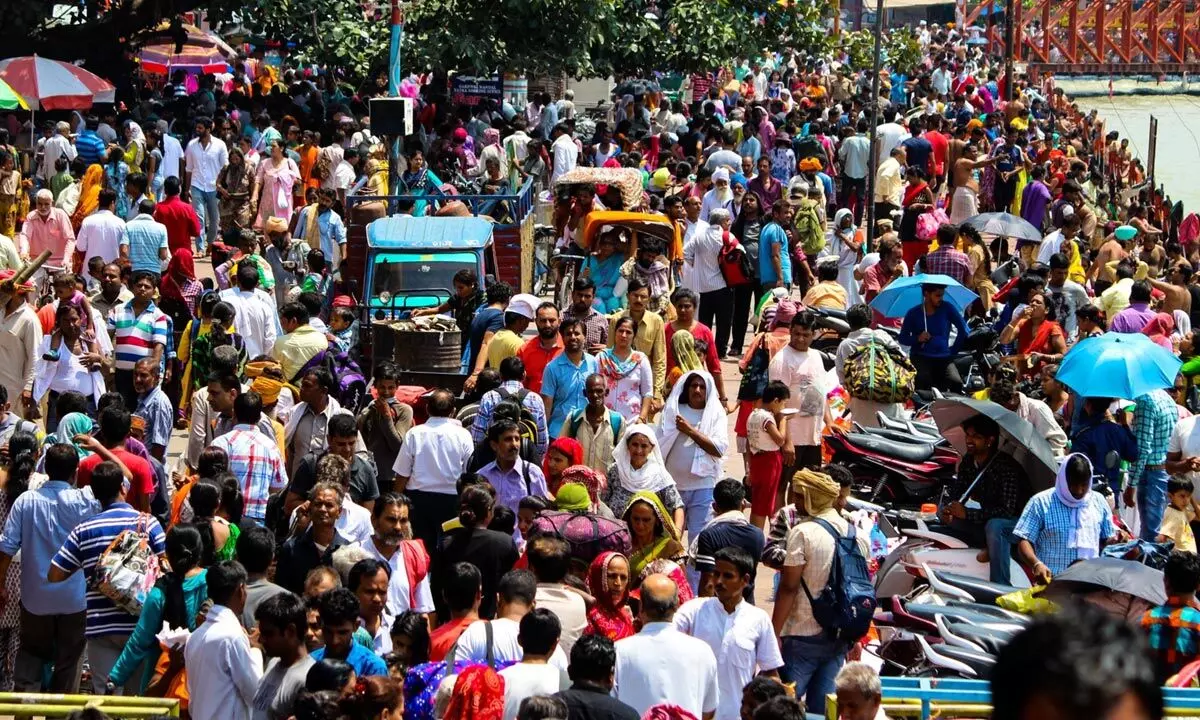India should seize demographic advantage to fuel economic growth
Boost for construction, public services, labour intensive manufacturing, tourism and e-commerce sectors
image for illustrative purpose

India’s success in exporting IT and BPO services is a good example of how it has leveraged its demographic advantage. It has the largest pool of graduates with a Science, Technology, Engineering and Mathematics (STEM) background, which is English speaking, giving India a differentiator vis-à-vis other geographies. India’s large pool of working-age population therefore provides a skill-based talent to address the needs, including globally
Having emerged as the world's most populous country, surpassing China's 1.425 billion people by about three million, India has to now reckon with the implications of this demographic shift particularly in the context of economy, society and environment.
According to an Ernst & Young study, the share of India’s working-age population of the country’s entire population will reach its highest level at 68.9% by 2030. India’s dependency ratio by then is projected to reach its lowest point at 31.2%.
With a relatively young population (median age of 28.4 years), India not only gets a competitive advantage in terms of workforce but also an opportunity to unleash the consumption power of a young population.
In absolute numbers, it will have 1.04 billion working-age persons by 2030. Correspondingly India’s young dependency ratio —the number of children below 15 years of age relative to total population — is expected to overtake the old dependency ratio (ratio of population aged above 65 years relative to total population) by 2056. The country will remain the largest provider of human resources in the world as it will account for 24.3% of the incremental global workforce over the next decade. This is quite significant considering the rapidly ageing population in the developed world, creating potential challenges to labour supply across various sectors of the global economy.
Approximately 26% of Indian population is below 14 years and 67% is between 15 and 64 years and seven per cent in the 65+ category. In contrast, the population of over 65 years in the US is 17% and Europe at 21%.
The potential contribution of the growing population to India’s GDP growth would depend, among other factors, on the rate of growth and size of total population and its contribution to the size of working age population, who may be absorbed in productive employment.
This young population not only reinforces India’s competitive advantage in the services and manufacturing sectors, but also unleashes the consumption power of a young population towards discretionary expenditure.
India’s success in exporting IT and BPO services is a good example of how India has leveraged its demographic advantage. It has the largest pool of graduates with a Science, Technology, Engineering and Mathematics (STEM) background, which is English speaking, giving India a differentiator vis-à-vis other geographies. The annual increase to this pool is estimated at 2.14 million graduates and India is also the global leader in STEM women graduates at 47.1%.
India’s large pool of working-age population therefore provides a skill-based talent to address the needs, including globally. Added to this is the ability to support a competitive manufacturing opportunity to address the global supply chain and domestic consumption market.
Other sectors that may accommodate this population include construction, public services, labour intensive manufacturing, services such as trade, transport and tourism, e-commerce, and other utility services in urban centres. These are the sectors where unskilled and semiskilled labour can easily be deployed.
Alongside, it is also critical to ensure that the working-age population in general, is suitably educated and skilled for jobs of the future.
In a way, the purchasing power of over a billion people has driven economic growth. Increased consumption has underpinned economic growth over the last decade.
Private Final Consumption Expenditure (PFCE) has grown at a CAGR of 11.3% (in nominal terms) over the last 10 years as against a nominal GDP growth rate of 10.6%. The ratio of PFCE to GDP has increased from 55% to 60%.
While incomes have a direct correlation with consumption, there are various structural changes driving the Indian consumption story. With continued macro-economic growth and growing population, consumption expenditure is expected to continue to grow at high rates and an important driver of economic growth.
Increasing uptake of consumer credit ecosystem and increased financial inclusion stem from the latest trends of consumers who are opening up to credit driven consumption. The uptake in credit from scheduled commercial banks underscores this trend. From 2016-17 to 2021-22, outstanding personal loans of scheduled commercial banks more than doubled from Rs 16.2 trillion to Rs 33.85 trillion.
The country has witnessed a strong wave of financial inclusion through the government’s thrust on bank accounts and investments to bolster that digital payments infrastructure. This provides an avenue for better credit assessment of citizens, who in the past may not have been eligible for consumer loans.
As the financial services sector develops and augments these solutions, credit to households would only increase, further fuelling the consumption story.

